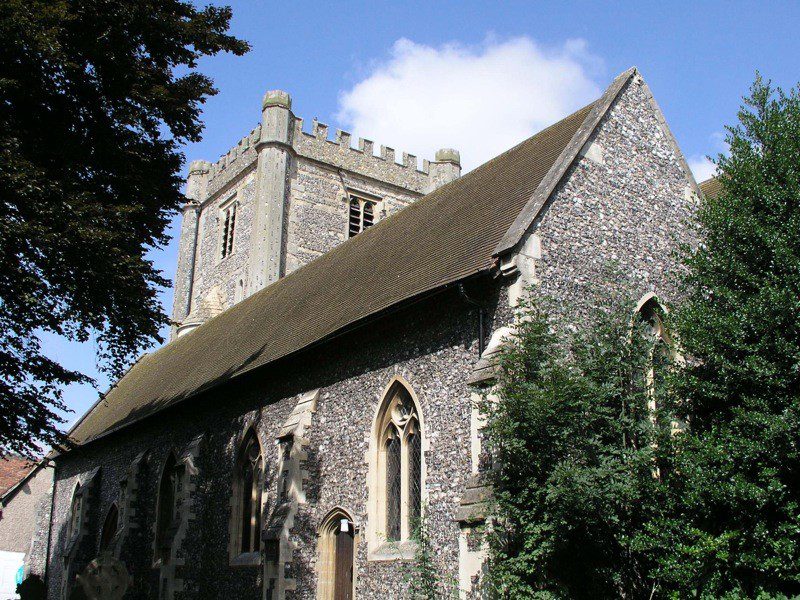The date of the original church on this site is unknown but it is generally thought that the first Christian building here was Norman in character, occupying the site of a pagan temple. It is known that the Norman church was rebuilt at the end of the 13th century.
The patronage of the church belonged, from an early date, to the Abbey of St. Albans. In 1506 it passed to the Crown, and from 1853 to the Bishop of Oxford.
The oldest part of the present church is the tower, rebuilt in 1653 following severe damage to the whole building in a thunderstorm in 1638. Much of the flint and stone used in the rebuilding was brought from the Norman castle which was demolished about this time.
The church was again largely reconstructed in 1854 when the nave was lengthened by shortening the chancel and the three earlier side arches replaced by two wider ones. The aisles themselves were almost doubled in width. The footings of the exterior walls of the earlier church run approximately in the middle of each present side aisle.
Also in the Victorian era, the old high box pews were replaced by low, open ones. Those used on civic occasions by the Mayor and Councillors have stall ends with carved filials bearing the town portcullis – these can be seen today against the side walls. At the same time, the chancel was remodelled.
In 2009 a major renewal of the interior took place. This included a new floor and heating, new lighting, a larger choir vestry, improved clergy vestry and Sunday School room (with safer access), new improved kitchen/refreshment area, and improved cloakroom facilities, including for the disabled. The font was moved from the back of the church to the dais and the dark Victorian pews have been replaced by chairs. The outside ramp now allows easy level access for all.
At the same time the organ, built in 1905 by Hill, Norman & Beard, was completely refurbished.
As well as being used for services and by the many parish groups, the building is now used by community groups for meetings, concerts etc.
